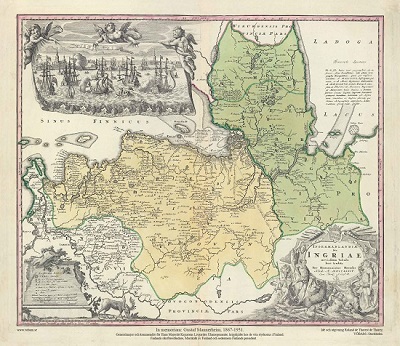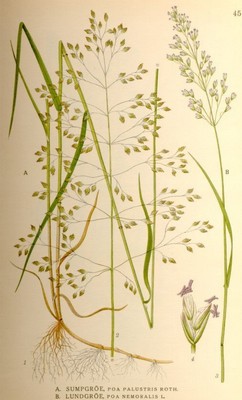I vår förra årsbok berättade vi om Frans Lindström och en del andra Stockholmskonstnärer, som var föga kända. Det var egentligen en omarbetning av en liknande artikel i vår årsbok 1951, då Frans Lindström för första gången gjordes känd för allmänheten. På grund av det stora intresset för Lindströms akvareller har emellertid årsboken 1951 sedan flera år tillbaka varit totalt slut. Att vi återigen tar upp detta ämne beror på att vi alldeles nyligen fått bekräftat att Frans Lindström var vår utan jämförelse produktivaste Stockholmsskildrare i bild och att vi fått tillgång till troligen hela hans konstnärliga kvarlåtenskap.
I slutet av förra året fick vi kontakt med Lindströms systerson Folke Fredin och genom honom med Lindströms dotter, fru Dagny Jansson, den enda kvarlevande av Lindströms tre barn. Hon hade i förvar - på sätt och vis utan att riktigt veta om det - faderns många hundra skisser till akvareller och en mängd bildmaterial av olika slag. Då Lindström avled 80-årig 1954 tog sonen Gösta hand om ...
Ur Stockholms borgargilles årsbok 1973.
(b 1813; d London, 19 Dec 1907).
English engraver. He was educated in Ghent, Belgium, and later at the Royal Academy Schools, London, where he was awarded silver medals in 1839 and 1841. He worked in the mixed mezzotint style and exhibited 43 examples of his work at the Royal Academy between 1841 and 1893. Of Stacpoole’s many plates, perhaps the best-known are those after William Holman Hunt’s Shadow of Death (1873; Manchester, C.A.G.) and the battle subjects of Lady Butler. Stacpoole began work early in 1874 on the engraving of Shadow of Death . The original picture had been bought by Thos Agnew & Sons and was exhibited so widely that, on publication of the engravings in 1877, the sale of proofs alone realized more than £20,000. By January 1879 Stacpoole had received a total of £3560 from the Fine Art Society for his plates after Lady Butler’s Roll Call (1874; British Royal Col.; declared for publication in 1874), Quatre Bras (1875; Melbourne, N.G. Victoria) and Balaclava (1876; Manchester, C.A.G.; both declared in 1876).
Bland arbeten.
Shadow of Death (1873; Manchester, C.A.G.), Lady Butler’s Roll Call (1874; British Royal Col.; declared for publication in 1874), Quatre Bras (1875; Melbourne, N.G. Victoria) and Balaclava (1876; Manchester, C.A.G.; both declared in 1876).
1748-1822. Född i Bergen, död i Köpenhamn.
Dansk nationalekonom. Han kom som ung till Island där han blev assistent vid Handelskompaniet. 1774 verksam som köpman och 1781 administrativ direktör för den 'Kgl. grönlandske, islandske, finmarkske och faeröske Handel'. 1791 blev han vice rådman och 1804 rådman i Köpenhamn. Han utsågs till statsråd och utvecklade ett rikt författarskap, särskilt i ämnen som handel, fiske och valfångst. Av särskilt intresse för Norge är 'Det finmarkske Magasins Samlinger' (1790).
Bland arbeten.
Det finmarkske Magasins Samlinger.
Bricka.
Ingermanlandiae – Homanns Erben 1734
Sumpgröe, Poa palustris - Lindman, C. A. M, Bilder ur Nordens Flora 1917-26.



